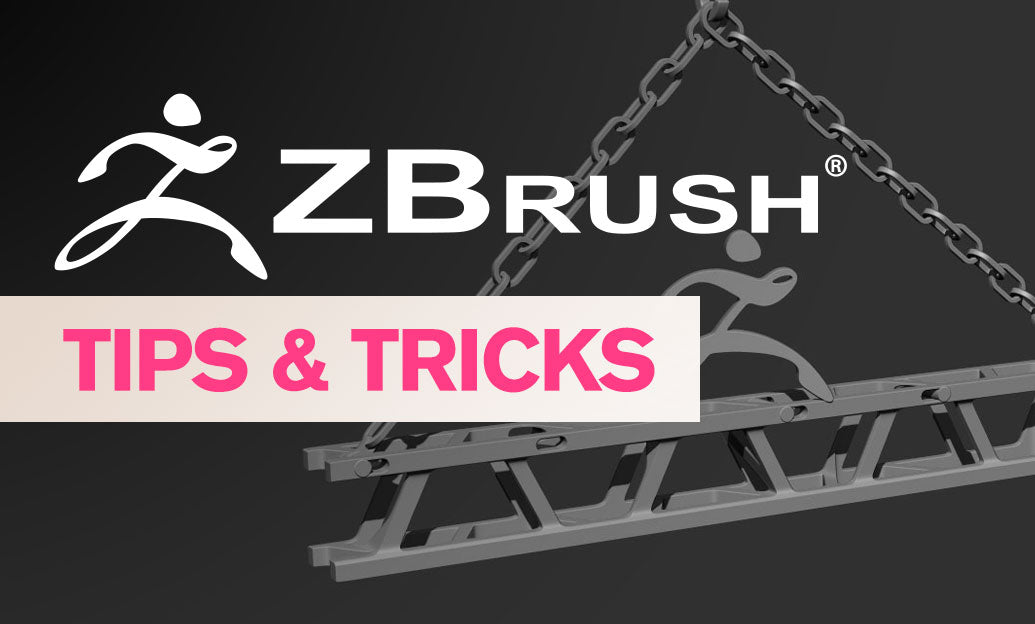Your Cart is Empty
Customer Testimonials
-
"Great customer service. The folks at Novedge were super helpful in navigating a somewhat complicated order including software upgrades and serial numbers in various stages of inactivity. They were friendly and helpful throughout the process.."
Ruben Ruckmark
"Quick & very helpful. We have been using Novedge for years and are very happy with their quick service when we need to make a purchase and excellent support resolving any issues."
Will Woodson
"Scott is the best. He reminds me about subscriptions dates, guides me in the correct direction for updates. He always responds promptly to me. He is literally the reason I continue to work with Novedge and will do so in the future."
Edward Mchugh
"Calvin Lok is “the man”. After my purchase of Sketchup 2021, he called me and provided step-by-step instructions to ease me through difficulties I was having with the setup of my new software."
Mike Borzage
Design Software History: The Evolution of Parametric Modeling: From Traditional Drafting to Modern Design Software Innovations
October 19, 2025 8 min read


Setting the Stage for Parametric Modeling
Parametric modeling represents a pivotal leap in the evolution of design software, emerging as a robust solution that addressed the inherent limitations of traditional drafting and static geometric representation. Historically, designers relied on manual drafting techniques and 2D blueprints that were not only time‐intensive but also prone to human error. The advent of computer‐aided design (CAD) initially allowed for digital rendition of these drawings; however, these early systems were low in flexibility and adaptability when changes were required. The shift towards parameter-driven design marked a fundamental transformation in the way shapes and assemblies were conceptualized in a digital space. This new paradigm allowed designers to define dimensions and constraints as parameters, enabling rapid modifications to complex models without having to reconstruct entire components or assemblies. The transformation was gradual but groundbreaking, as it addressed early technological challenges by incorporating variables and constraints that would redefine how geometry was controlled and manipulated within the software environment.
Emergence of Parameter-Driven Design
The embedded use of parameters in design software introduced a dramatic shift in efficiency and accuracy. Prior to this, even minor adjustments in a design required extensive rework and could introduce inconsistencies throughout the drawings. With parametric modeling, the relationship between dimensions could be defined so that changes in one parameter led to automatic, corresponding changes throughout the model. This innovation not only saved time but also enhanced precision since the changes were computed mathematically. Designers could now explore multiple design iterations rapidly, as each change was tracked dynamically through a relationship network of parameters and constraints. The ability to iterate quickly is vital in today’s competitive environment. Technologies that emphasized these aspect included constraint-based sketches and modular design systems, both of which built an interlinked network of dimensions that seamlessly adapted. The challenges were substantial during the early days of parametric modeling. Early CAD platforms struggled with the computational overhead and algorithms required to realize this vision; yet the need for flexible design methods drove relentless research and development in this field.
Traditional Drafting versus Parametric Modeling
Traditional drafting methodologies, while historically significant, were inherently static. In these systems, changes required extensive manual corrections, detracting from the efficiency and speed of the design process. By contrast, parametric modeling is defined by a dynamic relationship between design variables. The advantages of this approach include not only accelerated design revision cycles but also enhanced design precision, as parameter relationships reduced the possibility of human error in repeated manual adjustments. The historical transition to parameter-driven CAD solutions was motivated by the persistent need for a design methodology that could accommodate increasingly complex engineering demands. Key challenges, such as maintaining geometrical consistency and enabling automated error checking, were efficiently managed through mathematically-driven techniques that allowed for both scalability and adaptability. This significant evolution highlighted the pressing necessity for more adaptable modeling methods capable of meeting the challenges posed by modern design.
Pioneering Innovations with Pro/ENGINEER
The introduction of Pro/ENGINEER by Parametric Technology Corporation (PTC) was a historic moment in the evolution of design software. Pro/ENGINEER redefined how computers could be used not only to create digital representations but to establish relationships between model features using parameters. Prior to its introduction, CAD systems had limited capacity for capturing the inherent engineering relationships that define a product's structure. Pro/ENGINEER, often described as revolutionary, provided a platform where designers could create models that intelligently adapted to changes by specifying parameters that automatically cascaded through the design. It was a pivotal turning point, effectively bridging the gap between conceptual design and manufacturable geometry. The impact of Pro/ENGINEER was immediate and profound on the global design community, as it laid the groundwork for subsequent developments in parametric and feature-based modeling systems.
Birth and Impact of Pro/ENGINEER
Introduced in the late 1980s, Pro/ENGINEER leveraged advanced algorithms to lay out a system where features were not merely static elements but were interconnected by defined relationships. This was achieved by allowing parameters within sketches and subsequent features to behave in a coordinated fashion. When an engineer altered a dimension or supplied a new value, the software automatically updated all dependent features, minimizing error and drastically reducing design cycle times. The early days were characterized by significant trial and error. However, the pioneering efforts led by PTC's founding team gave birth to a tool that transformed mechanical design workflows. By offering an environment that aligned with the realities of engineering requirements, Pro/ENGINEER ensured that updating product designs was both fast and reliable. Engineers and CAD professionals could now modify designs with confidence, knowing that the underlying parameter relationships would hold constant.
Key Features and Milestones
Pro/ENGINEER’s introduction was marked by several features that set it apart. Among these, the ability to define complex relationships through constraints was particularly impactful. Designers benefited from features that included:
- Feature-based modeling – allowing the creation of complex parts by concatenating simpler geometric features;
- Associative constraints – ensuring that changes in one part of the design automatically propagate throughout all affected areas;
- Parametric definitions – providing a strong mathematical backbone to changes, ensuring consistency.
The Evolution to Modern Parametric Tools
The evolution of design software from the early days of Pro/ENGINEER to modern parametric tools is a narrative of continuous innovation, integration, and industry-specific adaptation. Today, the landscape of parametric modeling software is studded with solutions that not only build upon the technological foundations established by Pro/ENGINEER, but also integrate advanced computational methods, cloud capabilities, and collaborative features designed for a new era of digital manufacturing. As industries evolve and demand more innovative, interconnected, and fast-paced design environments, modern tools such as SolidWorks, Siemens NX, and Autodesk Fusion 360 have further refined the basic principles of parametric modeling to meet these challenges. These tools incorporate a host of new functionalities, ranging from real-time simulation to integrated additive manufacturing support, ensuring that designs not only meet current manufacturing needs but also innovate in response to evolving engineering challenges.
Comparative Analysis of Early and Modern Systems
When comparing early parametric systems to their modern counterparts, the differences span far beyond improvements in graphical user interfaces. The original systems, while groundbreaking at their inception, were designed primarily to handle specific mechanical design tasks. In contrast, modern parametric modeling tools leverage high-performance computing to offer a broad spectrum of functionalities. For instance, modern software solutions are tightly integrated with simulation modules, advanced finite element analysis (FEA), and real-time rendering capabilities that allow designers to predict how a design will behave under various conditions. The transformation was not solely about improvements in computational power. It was also about a conceptual shift: embracing a digital ecosystem where models could be shared, collaborated on, and iteratively improved within a networked environment. Some key distinctions include:
- Integration and Collaboration – Modern tools are designed for teams, incorporating cloud-based storage and collaborative features that allow multiple users to interact with a single model simultaneously.
- Advanced Simulation – Early software often had limited simulation capabilities, whereas modern platforms can simulate physical behaviors such as stress, thermal expansion, and fluid dynamics in real time.
- Enhanced User Interfaces – The graphical interfaces have become more intuitive, reducing the learning curve and making it easier to leverage complex parametric relationships.
Integration into Broader Design and Manufacturing Processes
Modern parametric tools have forged strong synergies with other aspects of the design and manufacturing pipeline. This integration is a defining feature of contemporary solutions. The parametric approach enables a seamless connection between Computer-Aided Design (CAD), Computer-Aided Engineering (CAE), and even Computer-Aided Manufacturing (CAM). As a result, engineers can now enjoy a continuous workflow where a single change in the design is instantly reflected in simulation data and manufacturing instructions. This continuity has been instrumental in reducing lead times and ensuring high product quality. Moreover, the feedback loop between computational design and real-world production has opened avenues for innovations such as generative design and topology optimization. Modern systems are capable of evaluating vast numbers of design alternatives, using parameters and constraints to navigate complex design spaces. This integration emphasizes the importance of developing robust collaborative environments where teams of engineers, designers, and manufacturers work in unison to push the boundaries of innovation.
Current Trends and Challenges in Parametric Software
While the advancements in parametric design have been remarkable, the field continues to face several challenges as it adapts to the rapidly evolving technological landscape. One of the most prominent trends is the incorporation of cloud-based and collaborative technologies that enable remote and distributed design work. As design teams become more global, the requirement for tools that function seamlessly over the internet is more pressing than ever. Designers and engineers now rely on systems that support real-time updates, remote simulations, and secure data sharing. However, this shift to cloud-centric workflows brings with it critical concerns regarding data security, intellectual property protection, and the need for robust, high-speed connections. Another notable trend is the growing integration of artificial intelligence (AI) and machine learning (ML) into parametric systems. These technologies promise to accelerate design iterations by predicting optimal design paths, automating routine tasks, and facilitating more complex optimizations that are beyond human capabilities. Additionally, the move towards additive manufacturing, which inherently requires highly precise and adaptable design methodologies, has dovetailed with parametric modeling paradigms to foster innovations that cost-effectively produce tailored products. Despite these challenges, modern parametric tools continue to adapt, evolve and enhance collaboration, ensuring that design precision and efficiency remain at the forefront of technological progress.
Conclusion
The journey from traditional drafting methods, through the groundbreaking innovation of Pro/ENGINEER, to the sophisticated modern parametric tools encapsulates an era of continuous evolution in design software. The initial challenges associated with static, non-parametric design methods catalyzed the development of dynamic, parameter-driven environments, a transformation that has fundamentally reshaped the engineering and manufacturing landscapes. At its core, parametric modeling is not simply a change in software—it is a paradigm shift that emphasizes precision, adaptability, and efficiency. The intricate web of relationships established by parameters allows for rapid iterations and ensures that every design adheres to the functional, aesthetic, and manufacturing requirements set forth at the inception of a project.
Summing Up the Historical Progression
Reflecting on the historical progress of parametric modeling, one appreciates how the seminal work done by companies such as PTC with Pro/ENGINEER has irrevocably influenced the design industry. The evolution to modern tools, including SolidWorks, Siemens NX, and Autodesk Fusion 360, has built upon that foundation with enhanced integration, user-friendly interfaces, sophisticated simulation capabilities, and robust collaborative features. The industry’s journey illustrates that modern parametric modeling not only enhances accuracy and efficiency in design but also promotes a more integrated approach between the various stages of product development—from conceptual sketches to high-fidelity manufacturing outputs. The continuous improvements in computational capabilities, coupled with the influx of AI and ML, suggest that the future of design software will further blur the lines between creativity and engineering precision, ensuring that design teams remain agile in an era of rapid technological change.
Insights into Future Developments
Looking forward, there is every reason to believe that the principles of parametric modeling will remain vital as design software continues to advance. Future developments will likely see these systems integrating deeper with real-time data sources and employing more robust algorithms driven by AI and ML. Continuous feedback from manufacturing processes will lead to even smarter designs capable of self-optimization. As challenges such as data security and efficient cloud collaboration are addressed, the evolution of parametric tools will create environments even more conducive to innovation and cross-disciplinary cooperation. With the ongoing synthesis of simulation, design, and production strategies, enhanced by new algorithms and computing paradigms, the future of design software looks set to radically change how products are conceptualized, tested, and manufactured. This uninterrupted journey of innovation, stretching from the pioneering innovations of Pro/ENGINEER to the advanced parametric solutions of today, is a testament to human creativity and our enduring pursuit of perfection in design.
Also in Design News

Cinema 4D Tip: Enhancing Skin Realism in Cinema 4D with Bump and Normal Maps
October 19, 2025 3 min read
Read More
Bluebeam Tip: Enhance PDF Workflow Efficiency with Bookmarks in Bluebeam Revu
October 19, 2025 2 min read
Read More
ZBrush Tip: Enhancing Alien Environment Design in ZBrush: Key Techniques and Tools
October 19, 2025 2 min read
Read MoreSubscribe
Sign up to get the latest on sales, new releases and more …


